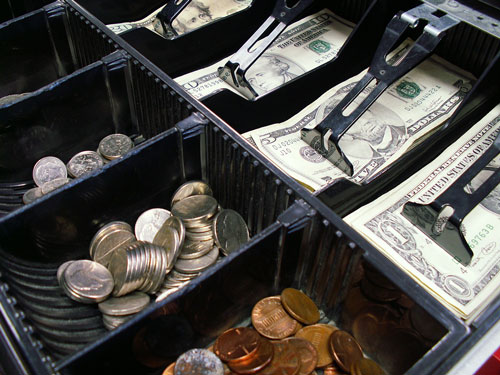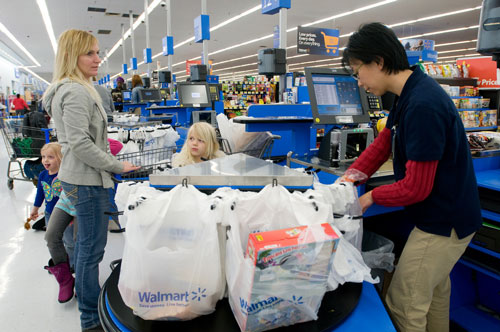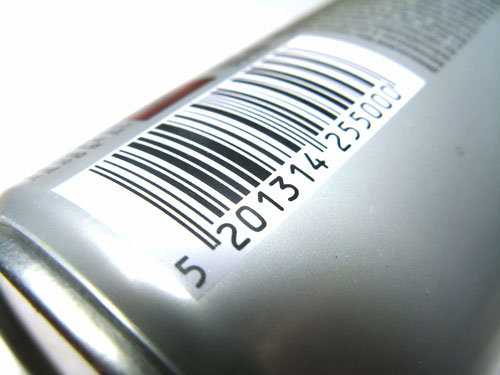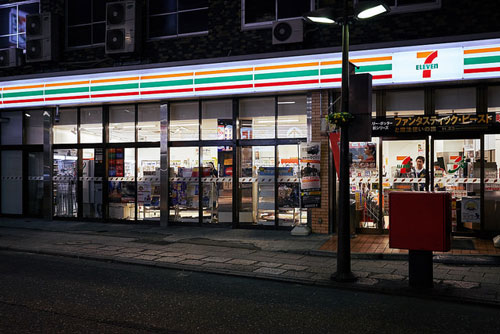Building a Better Cash Register: The Evolution of Retail Technology
Credit to Author: Ernie Smith| Date: Wed, 13 Sep 2017 13:00:00 +0000
A version of this post originally appeared on Tedium , a twice-weekly newsletter that hunts for the end of the long tail.
If it feels like the “robots are trying to steal our jobs” meme is a new development, I have some news for you: It’s really not.
For decades, automation has been implied to be the cause of—and solution to—all of life’s problems. Nowhere is this more the case than in the halls of retail, where automation helped redefine our interaction with shopping in important ways. And those innovations are still happening.
The problem of course, is that they will eventually cost some people jobs. But the point-of-sale system did create jobs along the way: the jobs of the folks who invented these point-of-sale systems.
Here’s how tech and commerce became inextricably linked.
“We should be much concerned about the future; we’re going to have to spend the rest of our lives there!”
— Charles F. Kettering, a major inventor during the 20th century, offering some philosophy on his approach to innovation. Kettering is perhaps best known for his many inventions related to the automobile, but he also invented the electric cash register during his time at National Cash Register, a fruitful five-year period in which he also invented a cash register with a built in phone (important for department stores of the era, which relied on credit), a low-cost printing cash register, and an accounting machine. These four inventions, according to a 2002 biography on the inventor, defined NCR’s fortunes for decades.

The secret sauce of point-of-sale systems: Electronic funds transfer
The cash register, in all its forms, was an important invention, but it had limitations. Before the point-of-sale system added purchase tracking and retail management functions to the financial transaction, it generally served a single purpose. An important one, granted, but still singular.
Perhaps the cash register’s biggest failing, though, is that it dealt in cash, which meant that there were more moving parts.
As I pointed out back in 2015, the credit card was around relatively early, but it didn’t have many of its best-known bells and whistles until the 1980s. And it got those bells and whistles in no small part due to Electronic Funds Transfer, or EFT. This technology, to put it in a nutshell, is the innovation that makes going cashless possible—and the thing that made ATMs useful.
It superseded checks for most purposes and put our buying power inside of a tiny card that fits in a wallet. Not a bad innovation.
But it was one that needed some major soft-pedaling for the public.
In a 1972 article, economist and syndicated newspaper columnist Sylvia Porter attempted this sort of soft-sell to her mainstream readership. She spoke of how many checks needed to be sent and mailed each month, and how much work that took. Then she recommended how to use charge cards to minimize that work.
“If you know how to use your credit or bank charge card with prudence, you can quickly cut this time-consuming, check-consuming, stamp-consuming burden,” she explained. “Simply use the card wherever you can: Gas station, store, restaurant, etc. Instead of receiving individual bills from each of these business, you receive one monthly charge card bill that you can pay with one check and one stamp—and at NO INTEREST provided you settle the account within the billing period. This quick settlement is the must.”
Then she highlighted what was coming next. Her column came a few years before EFT was live and on a national scale, but she noted that tests of the program were going on and that it would make it possible for people to buy things and have the amounts pulled from your account automagically. It was the cash register on steroids.
This was the dream, but it was hard to get consumers interested at first. Despite the benefits of cash, it was just too different from what we had before.
Regulators wanted a say in EFT technology as it rolled out, and in 1978, Jimmy Carter signed a law regulating EFT with the goal of keeping consumers safe. The added weight of law was necessary to ensure its future uptake.
And there were always skeptics. A fascinating New York Times essay on the topic of Electronic Funds Transfer, written by Harold W. Greenwood Jr., who later became the chairman of Midwest Federal Savings & Loan (and faced racketeering charges when the firm collapsed), suggested that early attempts to bring EFT to the market ignored the most important element of making the business model work.
“Like the Edsel, an automobile that looked wonderful on the drawing board, EFT simply has not worked because the same element was dropped out of the planning stage: the consumer,” Greenwood wrote in 1978.
By this point, consumers had yet to warm up to ATMs for reasons of privacy and distrust of machines, which meant that EFT services were still of limited value.
This eventually thawed, but slowly: One 1985 poll on electronic funds transfer at point of sale (EFTPOS), published in the UK-based The Druggist and Chemist, found that just 8 percent of consumers very much liked not having to pay cash or checks for everything. Interest from retailers in the poll was similarly muted.
But technology kept improving. Things got more convenient. Older adults passed on, and younger adults had fewer issues with the technology. The magnetic strip, which made credit and debit cards easier to use, became a standard part of such cards.
And soon enough, consumers embraced cashless.

Five notable ways that retailers and restaurants reinvented themselves through the use of point-of-sale systems
- Walmart launched its POS system in 1983, and quickly used the system to completely reinvent its supply chain. The company changed its vendor setup so that they had this point-of-sale data and would ship accordingly, which was probably five steps ahead of its competitors. By 1989, the company had distribution costs of 1.7 percent of its costs of sales—far less than any of its major competitors.
- McDonald’s, which had a POS system as early as 1974, looked into upgrading in the early 90s, took a gander at the market, and didn’t realize anything out there actually fit its needs. So it called on big-name vendors to build out tools to its exact specifications, according to a 1997 CIO article. “We influenced our vendors to develop the next generation of systems based on our software, offering some financial support and teaching them what we need in our restaurants,” the fast food chain’s CIO, Carl Dill, said at the time. (Notably, McDonald’s also used advanced software, based on the Sun SPARCstations, to help the company to figure out where to build new locations. The technology was so effective that it sold it to other companies under the name Quintillion.)
- J.C. Penney had to try installing a point-of-sale system a couple of times before they got it right. In the late 1960s, it was the first guinea pig to sign up with General Electric when the industrial firm had created its TRADAR system, one of the earliest POS platforms, on a $10 million contract. But the company eventually ditched it because it was too complicated, and later switched to a variety of other vendors, including IBM and NCR.
- The department store chain Dillard’s, one of the first retail chains in the country to install a POS system in the 1960s, got into the technology because William T. Dillard II, the son of the founder, had gained an appreciation for such technology as a teenager, and pushed the chain toward IBM, according to a 1988 retrospective on the chain’s history. “A problem with such a comprehensive system, however, was that his ideas were ahead of the technology,” author Leon Joseph Rosenberg wrote. “Even IBM, the electronic industry leader then and now, did not have merchandising programs available to do all that Bill wanted.”
- Sit-down restaurants big and small began to embrace computers as well starting in the early 1980s, using a variant of the point-of-sale system called the restaurant computer system. A Green Bay Press-Gazette article from 1981 noted how the Ponderosa steakhouse chain used such a system to allow its restaurants to phone home to headquarters, while smaller restaurants used them to manage things internally. At fine-dining venues, the computers tended to be behind the curtain.

People complained that computers were going to steal their jobs back in the 70s, too
When IBM engineer George Laurer first invented the the design for the Universal Product Code barcode system in 1971, it quickly became something of a killer app for the point-of-sale system. (It won against numerous competing designs, many designed to look like bulls-eyes.)
With this code, a POS system could now easily be used to track the inventory of goods.
“Nothing will have more impact on the future of food distribution,” the Super Market Institute pledged to its members, according to a Popular Mechanics article explaining how the codes worked.
But it had some unexpected side effects that rumbled up from the world of labor. The UPC code, as it entered retail for the first time around 1975 or so, raised a whole host of concerns for the employees working those cash registers it was about to replace. And they complained. Loudly.
One March 1975 Los Angeles Times article set the stage, suggesting that labor unions would quickly use their clout to fight against a technology they warned could cost 100,000 people their jobs, due to all the efficiencies added.
Union officials were trying to leverage the situation, still new and with many unknowns, as best they could.
“It is a lie to say we oppose computerization itself, however,” explained Ken Edwards, the head of the AFL-CIO Retail Workers Local 770. “We’re thinking about an ‘automated’ contract, which would cut our workweek as our productivity goes up. We want our fair share, and a share for consumers, and that we’re ready to fight for.”
The article, which jumped over three pages because that was something newspapers did in 1975, also suggested a direction that grocery stores could go to minimize human interaction entirely:
In years to come, some experts predict, stores will only have dummy displays of most items.
Instead of taking items from shelves, you will just insert your special coded card into the front of the display and when the shopping tour is done, the bill, along with the purchased items, will be waiting at the front counter for you to pay your bill.
While you go through the store, computers would call the stock room with your card-punched order.
Clearly we didn’t get that—we got Instacart instead, which arguably adds more humans to the process of shopping—but that we were thinking this way shows just how much uncertainty there was.
Also not happy: Consumer groups, which pointed out that the UPC codes often replaced price tags directly on the boxes, which meant that people didn’t know how much they were paying for an item.
“That’s one of our basic reservations, no prices on the items,” noted Ricki Stochaj, the president of the Consumers League of New Jersey, in a 1974 New York Times article. “People have a right to know what they’re being charged.”
That complaint, which seems reasonable even today, would of course have the effect of adding a lot more work onto stores, as they would have to continue tagging goods with prices even though they were no longer technically necessary.
This debate played out in a few states, including California and Ohio.
Perhaps it’s for these reasons that UPC’s effect on the labor pool turned out to be something of a nothingburger, at least until the invention of self-checkouts nearly two decades later. People are still slow in checkout lines; people still need prices on their boxes of Chex. (And even the self-checkouts have problems that mean humans aren’t jobless just yet.)
But it did prove an important innovation and a turning point for groceries, in any case.
The point-of-sale system was an American invention—as were related innovations like the universal product code and electronic funds transfer, two technologies that turned POS platforms from niceties to essential retail tools.
And it continues today with tools like Square, which makes it possible to have an iPad-based POS system for your small business, complete with cash drawer, for like $500. Talk about progress.
But we can’t finish talking about POS innovation without mentioning Japan: specifically, the Japanese version of 7-Eleven.
The US version of 7-Eleven, of course, innovated by simply expanding its hours to the point that it could guarantee it was the only store open at many points of the day.

The Japanese spinoff, however, went another direction entirely. On top of changing its store offerings to match regional sensibilities, it doubled down on computers’ retail role when some in the retail industry were still skeptical. In 1982, they were the first Japanese company to install a point-of-sale system, according to a Northwestern University report on the firm.
They also spent a lot of money building out an advanced ISDN network (an early digital transmission technology), as well as upgrading the POS machines to support color graphics. Together, these things made the chain one of the most important in all of Japan—along with a totally wonderful experience for American visitors who write BuzzFeed articles.
It was so important, in fact, that when the US business started to struggle, the Japanese company was there to prop it up in 1991, and later buy the whole thing in 2005.
A big part of this growth comes down to that POS system. It chose to focus on tech at just the right time.
And that’s why our nearby 7-Eleven is owned by a Japanese company.
Get six of our favorite Motherboard stories every day by signing up for our newsletter.